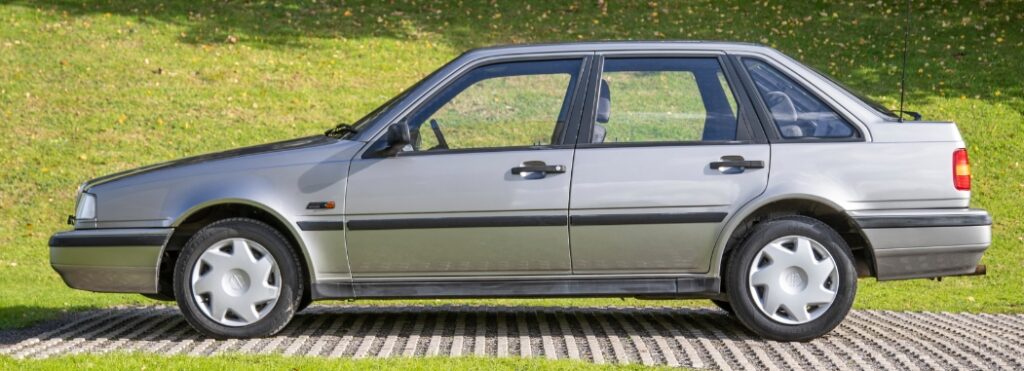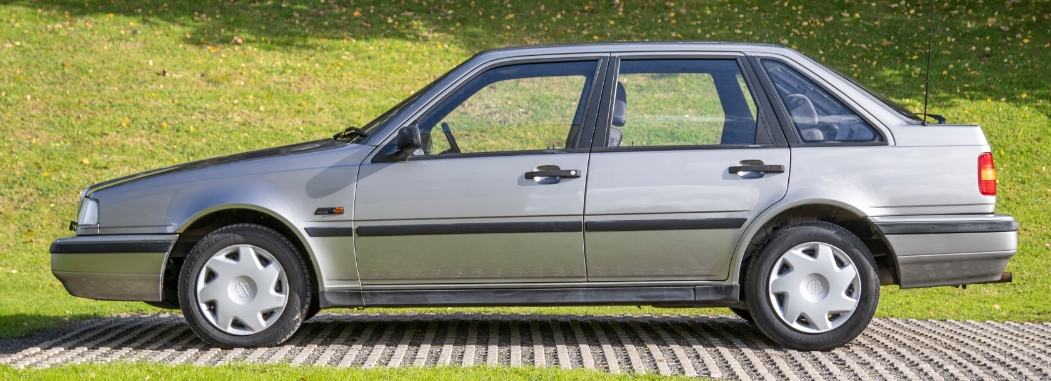The Evolution of the Volvo 440 and 480: A Comprehensive Overview
Volvo has a long-standing reputation for producing durable, safe, and innovative vehicles. Among its notable models during the late 20th century are the Volvo 440 and 480, which marked significant milestones in the company’s efforts to appeal to a broader audience, including younger drivers and those seeking compact, practical vehicles. This article provides a detailed history of these models, their development, production years, variants, and specifications.
Introduction to the Volvo 440 and 480
The Volvo 440 and 480 were introduced in the mid-1980s as part of Volvo’s strategic move to expand its lineup into the compact car segment. The 440 was primarily a front-wheel-drive sedan and station wagon, while the 480 was a distinctive coupe with a more sporty, youthful appeal. Both models embodied Volvo’s commitment to safety, reliability, and practicality, but they also showcased design and technological innovations reflective of their time.
Development and Introduction
Volvo 440 (1987–1996):
The Volvo 440 was developed as a successor to the Volvo 340, which had been produced since 1976. The 440 was introduced in 1987, representing a modern redesign with a focus on front-wheel drive, increased interior space, and contemporary styling. It was built on the Volvo PV platform, shared with other models like the 460.
Volvo 480 (1986–1995):
The Volvo 480 was launched a year earlier in 1986, primarily for the European market, with a focus on style and sporty appeal. It was based on a new platform developed specifically for this model, emphasizing a coupe design with a hatchback layout. The 480 was notable for its distinctive pop-up headlights and sleek lines, setting it apart from traditional Volvo models.
Production Years and Model Timeline
| Model | Years of Production | Key Highlights |
|---|---|---|
| Volvo 480 | 1986–1995 | First Volvo coupe, distinctive styling, pop-up headlights |
| Volvo 440 | 1987–1996 | Compact sedan/station wagon, front-wheel drive, versatile lineup |
Volvo 480: Detailed Evolution
Introduction (1986)
- Design & Features: The Volvo 480 was introduced at the Geneva Motor Show in 1986. Its design featured a low, sporty profile with a hatchback layout, pop-up headlights, and a distinctive rear-end. It was built to appeal to younger buyers and those seeking a stylish yet practical vehicle.
- Engine Options: Initially available with a 1.7-liter inline-4 engine, producing approximately 105 horsepower, with a later 2.0-liter version adding about 122 horsepower.
Model Years and Variants
- 1986–1990: The early models, often referred to as the “Phase I,” featured basic trims with manual or automatic transmissions. The engine options included the 1.7L and 2.0L versions, with the latter providing more performance.
- 1990–1995 (Phase II): The facelifted models introduced minor styling updates, interior improvements, and the addition of more features such as power windows, improved suspension, and additional trim levels.
Trim Levels and Special Editions
- L, GL, GLT: The base model L offered minimal features, while the GL added comfort and convenience features. The GLT was the sporty version with a more powerful engine, sport seats, and alloy wheels.
- Limited Editions: Throughout its production, Volvo released special editions, such as the “SE,” which included unique paint options and interior trims, and “Turbo” models with a turbocharged engine.
Engine and Performance Details
- 1.7L SOHC (105 hp): Standard in base models, offering adequate performance for city driving.
- 2.0L SOHC (122 hp): Available in higher trims and turbocharged versions.
- Turbocharged 2.0L (125–140 hp): The turbo models provided a significant boost in performance, appealing to enthusiasts.
Notable Features
- Safety: As expected from Volvo, safety features included reinforced body structures, side impact protection, and optional anti-lock brakes.
- Technology: The 480 was among the first Volvos to feature electronic fuel injection and other technological advancements of the era.
Volvo 440: Detailed Evolution
Introduction (1987)
- Design & Features: The 440 was introduced as a modern replacement for the Volvo 340, emphasizing front-wheel drive, improved interior space, and contemporary styling.
- Body Styles: Available as a sedan and wagon, offering versatility for family and utility use.
- Engine Options: Initially equipped with 1.4L and 1.7L gasoline engines, with later options including larger engines and diesel variants.
Model Years and Variants
- 1987–1994: The first generation (Phase I) featured basic trims and progressively added features.
- 1994–1996: The second generation (Phase II) introduced extensive updates, including new styling, improved safety features, and engine options.
Trim Levels and Configurations
- Base, L, GL, GLT: The entry-level models offered basic amenities, with higher trims adding features like power windows, alloy wheels, and upgraded interior materials.
- Special Editions: Limited runs such as the “SE” and “ES” trims offered unique styling cues and additional features.
Engine and Performance
- Gasoline Engines:
- 1.4L (82 hp)
- 1.6L (105 hp)
- 1.7L (90–105 hp)
- 2.0L (125 hp in later models)
- Diesel Engines:
- 1.7L turbo-diesel (67–80 hp), primarily in European markets.
Notable Features
- Safety & Comfort: The 440 incorporated Volvo’s safety philosophy, with reinforced passenger compartments and optional anti-lock brakes.
- Technology: Features such as electronic fuel injection, improved suspension, and optional air conditioning.
Key Model Variants and Special Editions
Throughout their production runs, both the Volvo 480 and 440 saw various special editions aimed at different markets and consumers:
- Volvo 480 Turbo: The turbocharged versions of the 480 were among the most popular, offering sporty performance.
- Volvo 440/460/480 SE: Special editions with unique paint, interior trims, and additional features.
- Limited Editions: These included models like the “Celebration Edition” or “Silver Line,” often released for specific markets or anniversaries.
.
We LOVE cars & cruising around, but sometimes day trips to explore new cities are required (with family or friends) for a spice of variety in your life!
So GO explore!
Cruises & Day/Night City Tours to: Baltimore, Boston, Chicago, Marina Del Ray, New York, Niagara, Philadelphia, San Diego, San Francisco, Toronto, Washington DC, etc.:

.
Safety and Technological Innovations
Both models reflected Volvo’s core values of safety and reliability. Notable safety features over the years included:
- Side-impact protection systems
- Reinforced safety cell structures
- Anti-lock braking systems (ABS) in higher trims
- Crumple zones and safety belts with pretensioners
Technologically, they featured electronic fuel injection, improved suspension systems, and, in some cases, early versions of driver aids.
Discontinuation and Legacy
Volvo 480: Production ended in 1995, succeeded by newer models like the Volvo C70, which inherited some of the coupe’s sporty appeal but with modern styling and technology.
Volvo 440: Its production concluded in 1996, replaced by models such as the Volvo S40 and V40, which continued Volvo’s tradition of safety and practicality in compact vehicles.
Both models are now considered classics, appreciated for their unique styling, safety innovations, and role in Volvo’s history of expanding into new market segments.
Summary Table of Key Specifications
| Model Year | Engine Options | Power (hp) | Body Style | Notable Features |
|---|---|---|---|---|
| Volvo 480 | 1.7L, 2.0L, Turbo 2.0L | 105–140 | Coupe / Hatchback | Pop-up headlights, sporty design |
| Volvo 440 | 1.4L, 1.6L, 1.7L, 2.0L, Diesel | 82–125 | Sedan / Station Wagon | Front-wheel drive, versatile trims |
Conclusion
The Volvo 440 and 480 represent important chapters in Volvo’s history, blending safety, practicality, and innovative design. The 480, with its distinctive coupe styling and sporty performance, appealed to a youthful demographic, while the 440 offered reliable, family-friendly transportation with a focus on safety and versatility. Their production spans nearly a decade and a half, during which they incorporated technological advances and adapted to changing market demands.
Today, these models are still admired by enthusiasts and collectors for their unique characteristics and the role they played in shaping Volvo’s reputation as a maker of safe, dependable vehicles with a touch of style.








